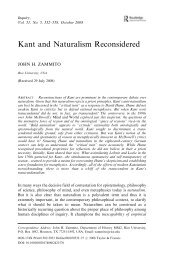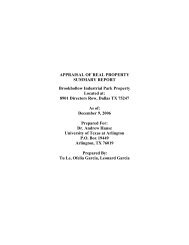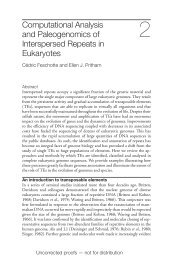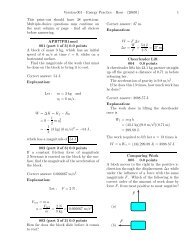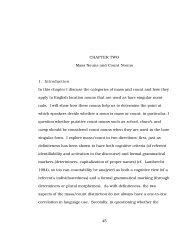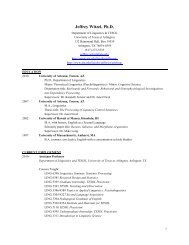Low Rank ADI Solution of Sylvester Equation via Exact Shifts
Low Rank ADI Solution of Sylvester Equation via Exact Shifts
Low Rank ADI Solution of Sylvester Equation via Exact Shifts
Create successful ePaper yourself
Turn your PDF publications into a flip-book with our unique Google optimized e-Paper software.
Similarly from (4.19), (4.20), (4.8) and (4.9) we haveϑ (j)max =( ϑ(1, j − 1)∥ diag ,µ 1 − λ pj= maxkϑ(2, j − 1), . . . , ϑ(k )∥B, j − 1) ∥∥∥∥µ 2 − λ pj µ kB − λ pj‖ϑ(k, j − 1)‖. (4.24)|µ k − λ pj |For the solutions <strong>of</strong> the <strong>Sylvester</strong> equations (3.15) and (3.16), one can obtainthe following bounds⎛‖δX 2 ‖ ≤ κ(S)‖T −1 ∑n 0‖‖δBT ‖‖X‖ ⎝j=1⎛‖δX 3 ‖ ≤ ‖S‖‖T −1 ‖‖S −1 (GδF ∗ + δGF ∗ ∑n 0)T ‖ ⎝|µ qj − λ pj | η (j)max ϑ (j)j=1max⎞⎠ , (4.25)|µ qj − λ pj | η (j)max ϑ (j)⎞⎠max .(4.26)Theorem 4.3 Assume A and B having Jordan canonical decompositions (4.1)and (4.2). Let X be the solution <strong>of</strong> the <strong>Sylvester</strong> equation (2.1) and let X +δXbe the solution <strong>of</strong> the perturbed <strong>Sylvester</strong> equation (3.12). Ifis sufficiently small, thenɛ = max{‖δA‖, ‖δB‖, ‖δG‖, ‖δF ‖}‖δX‖‖X‖ ≤ ( κ(T )‖S‖‖S −1 δA‖ + κ(S)‖T −1 ‖‖δBT ‖+‖S‖‖T −1 ‖ ‖S−1 (GδF ∗ + δGF ∗ ))T ‖γ + O(ɛ 2 ), (4.27)‖X‖where γ = ∑ n 0j=1 |µ qj −λ pj |ϑ (j)max η max, (j) and η max (j) and ϑ (j)max are defined as in (4.23)and (4.24).Pro<strong>of</strong>. From ‖δX‖ ≤ ‖δX 1 ‖ + ‖δX 2 ‖ + ‖δX 3 ‖ + O(ɛ 2 ) using previous bounds(4.22), (4.25) and (4.26) for ‖δX 1 ‖, ‖δX 2 ‖ and ‖δX 3 ‖, respectively we obtainassertion <strong>of</strong> the theorem. ✷Remark 4.1 Again, using ‖AB‖ F ≤ ‖A‖‖B‖ F and ‖AB‖ F ≤ ‖A‖ F ‖B‖ ([45,Theorem II. 3.9.], similarly like in the previous calculations, one can obtainfollowing bound for Frobenius norm23



